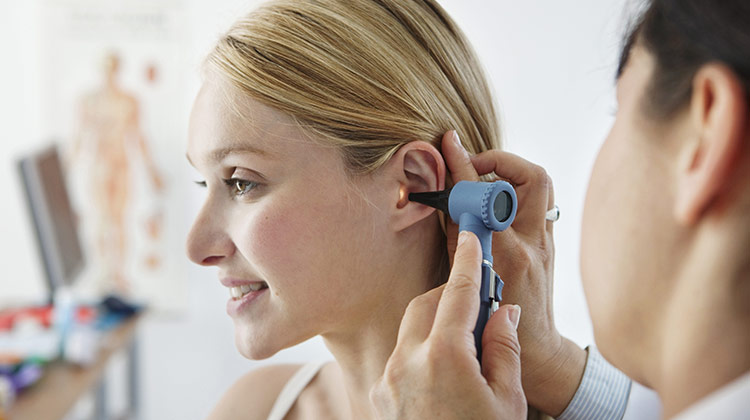Otolaryngology
 Ear, nose and throat, as the name suggests, is a medical unit that researches and treats diseases in the ear, nose and throat regions. The field of otorhinolaryngology covers all of the head and neck disorders that patients of all ages can experience frequently. The otolaryngology branch, which provides complete treatment for problems such as colds, otitis media, hearing loss, inability to smell and persistent tinnitus, also deals with problems such as balance disorders and dizziness caused by inner ear problems.
Ear, nose and throat, as the name suggests, is a medical unit that researches and treats diseases in the ear, nose and throat regions. The field of otorhinolaryngology covers all of the head and neck disorders that patients of all ages can experience frequently. The otolaryngology branch, which provides complete treatment for problems such as colds, otitis media, hearing loss, inability to smell and persistent tinnitus, also deals with problems such as balance disorders and dizziness caused by inner ear problems.
Frequently Asked Questions
What is Ear Nose and Throat?
The otorhinolaryngology branch, also known as otorhinolaryngology or otolaryngology, undertakes the diagnosis and treatment of all kinds of anomalies and diseases in the neck and surrounding system. The otolaryngology department, which investigates all congenital anomalies, later developing diseases, hearing, taste and smell disorders due to old age and physical trauma, applies different treatment methods according to the type and level of the diseases. While mainly medical treatment methods are preferred in infectious cases, surgical operations can also be applied in cases of structural anomalies, cysts and deformities.
What Diseases Does Ear Nose Throat Treat?
Ear, nose and throat branch; infectious diseases that may occur in the head and neck region, dysfunctions that may occur in the ear, nose and throat; performs the treatment of all tonsil, nasal and airway problems. After listening to the patient's complaint and story, otolaryngologists perform detailed examinations using various diagnostic methods, so that the disease causing the complaint is clearly identified. After the diagnostic procedures are completed, the most appropriate treatment plan for the patient is revealed by using medical and surgical methods.
What are the Diagnostic Methods of Ear Nose and Throat Diseases?
The otolaryngology branch performs all examination and diagnosis procedures with its own methods, except for cases where the disease is related to other branches. These methods are determined according to the impression created by the patient's complaint and are continued until the factor causing the disease is fully revealed. The most commonly used ear nose and throat diagnosis methods are as follows.
Balance Maneuvers
Equilibrium maneuvers, also known as Epley - Hallpike maneuvers, are used in the diagnosis and treatment of benign paroxysmal vertigo caused by the dispersion of inner ear crystals. Thanks to balance maneuvers, the cause of vertigo that occurs in attacks is clearly understood and the most appropriate treatment method is planned.
Examination by Endoscopic Method
Endoscopic examination procedures can also be applied in order to fully detect the diseases related to the otolaryngology branch. Endoscopic examination is a method that is mainly used to investigate problems in the back of the nose and is applied by inserting a micro-sized camera into the nose. Many disorders that cannot be diagnosed by other examination methods can be easily detected by endoscopic examination, and this makes it possible to start treatment as soon as possible.
VNG Device
VNG device is a device that analyzes reflex type eye movements known as “nystagmus”. The frequency of involuntary eye movements is a data that reveals problems in the inner ear. The VNG device, which analyzes this data, facilitates the diagnosis of many otolaryngological diseases, especially vertigo.
Audiology
Audiology procedures, also called "hearing test", investigate hearing - balance disorders and reveal whether the person has any problems with hearing. In addition to hearing loss, audiology can reveal health problems that damage body balance and ear structure.
If you want to follow your health closely and take early precautions against diseases, you can choose World Health.
 Ear, nose and throat, as the name suggests, is a medical unit that researches and treats diseases in the ear, nose and throat regions. The field of otorhinolaryngology covers all of the head and neck disorders that patients of all ages can experience frequently. The otolaryngology branch, which provides complete treatment for problems such as colds, otitis media, hearing loss, inability to smell and persistent tinnitus, also deals with problems such as balance disorders and dizziness caused by inner ear problems.
Ear, nose and throat, as the name suggests, is a medical unit that researches and treats diseases in the ear, nose and throat regions. The field of otorhinolaryngology covers all of the head and neck disorders that patients of all ages can experience frequently. The otolaryngology branch, which provides complete treatment for problems such as colds, otitis media, hearing loss, inability to smell and persistent tinnitus, also deals with problems such as balance disorders and dizziness caused by inner ear problems.



